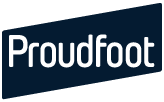Develop an inflation-driven risk management plan
Today’s environment is one of escalating tensions, war, and economic sanctions. This comes as the world emerges from the COVID-19 pandemic, which prompted unprecedented business change and supply chain disruptions over the past two years.
Companies are challenged to continuously create value in a volatile world. That demands rethinking and reimagining business operations to not just survive but thrive under pressure.
Surging inflation is forcing businesses to adapt quickly. As a business leader, now is the time to analyze your organization and develop an inflation-driven risk management plan that helps you understand where to make changes—and then act on those changes at speed.
Related: How to Protect Your Business from Inflation
Impacts of inflation
In the United States, inflation reached a 40-year high in February, with the Consumer Price Index climbing 7.9% annually. High inflation is hitting the European Union as well, with the annual inflation rate rising to a record high of 5.8% in February.
Surging energy prices in response to the Russia-Ukraine war could cause inflation to keep rising in 2022, resulting in short- and long-term impacts on companies. Here’s how inflation is affecting several key areas for businesses:
- Impact of different material mix inflation inputs: In an inflationary environment, costs for factor inputs (like raw materials and components) increase at various rates on different inputs throughout the year. This makes it challenging to price products and services accurately without implementing unpopular across-the-board price hikes.
- Logistics cost changes throughout the value chain: A Logistics Management survey of 100 industry stakeholders found 97% of respondents report supply chain and logistics costs are up annually—more than 50% for almost one-fifth of those surveyed. As a result, many shippers are raising their prices.
- Energy cost fluctuations: Energy costs—including gasoline, electricity, natural gas, and coal—are a top driver of inflation and increased 3.5% year-over-year in February, according to the U.S. Bureau of Labor Statistics.
- Margin impacts by SKU and customers: Profit margins can actually rise with inflation. Many of the biggest U.S. publicly traded companies recorded 2021 profit margins at least 50% above 2019 levels, The Wall Street Journal reports. The key is to carefully analyze prices by product and to understand what customers will accept.
- Impact of high-priced crude oil and minerals: Oil prices soared above $100 a barrel in March. The U.S. recently announced a ban on Russian oil imports, and some experts predict that prices could exceed $200 a barrel this summer if more countries implement sanctions.
- Changed consumer behavior: A recent survey shows 80% of consumers plan to alter their buying habits if inflation persists. Changes include buying less, choosing lower-priced items, and looking for private label options.
What steps companies should take now
What if you could proactively manage economic pressures to drive an inflation-driven operating model that can identify optimal scenarios and a change blueprint for today’s environment?
Establish an inflation-driven risk management plan
To help prepare your company for the impacts of inflation, it’s essential to create an agile change blueprint to minimize and manage your risk. You can start this exercise by doing a thorough analysis that includes:
- Scenario modeling the impach of different material mix inflation inputs
- Knowing logistics cost changes throughout your value chain
- Simulating energy cost fluctuations at one or all your operating locations
- Seeing margin impacts by SKU and customers
- Determining the business impact of high-priced crude oil and minerals
- Assessing changes in consumer behavior
With this analysis in hand, you can then develop a change blueprint, driven by an agile-based and operational roadmap, to mitigate inflation risks. Having a well-designed strategy is the best way to prepare for economic uncertainty.
Related: How to Mitigate Inflation Risks in the Construction Industry
Act with speed
Once you have your blueprint, it’s important to act on the plan quickly. Engage employees throughout the change because buy-in is difficult without involving your people.
As you implement the plan, recognize the short- and long-term inflation impacts on your operations. A targeted data analysis will help you choose the best operating model for achieving your goals this year and beyond.
You’ll need to prioritize process efficiencies based on a new economic reality. Continuous and inflation supply chain pressures will require businesses and the world economy to adjust—having an agile change blueprint helps ensure you’re ready.
If we were to learn anything from the past 2 years, COVID-19 taught us that those that fared well during the pandemic were those that had a risk plan and acted on it at speed.
Equally, those that were able to see the future and rapidly pivot to new offers and new business scenarios fit for the world then-and-now are those who mostly came up on top.
Whether you are dealing with a pandemic or a set of world issues that lead to inflation, having a well developed risk management plan is your key to navigating the world’s uncertainty, staying relevant for your clients, and succeeding in delivering value to all of your stakeholders.
How Proudfoot can help
In its 76-year history, Proudfoot has worked with thousands of organizations to create lasting, sustainable business transformation change by working alongside our client’s people.
Through 2020 and 2021, we worked with our clients, virtually and on the ground, to transform businesses at speed, creating build-back plans that allowed companies to thrive while engaging people through the vast changes happening worldwide.
In 2022, we’ve already worked with global CEOs across multiple industries—from agribusinesses to construction firms—to develop inflation-driven risk management plans that prepare their businesses for the current and future impacts of inflation.
As the conditions that catalyze inflation persist, are you planning for the downstream impacts of increased costs and supply chain shortages on your business?
Book a meeting with Proudfoot to analyze your business and start prioritizing the changes you need to make to combat inflation.

